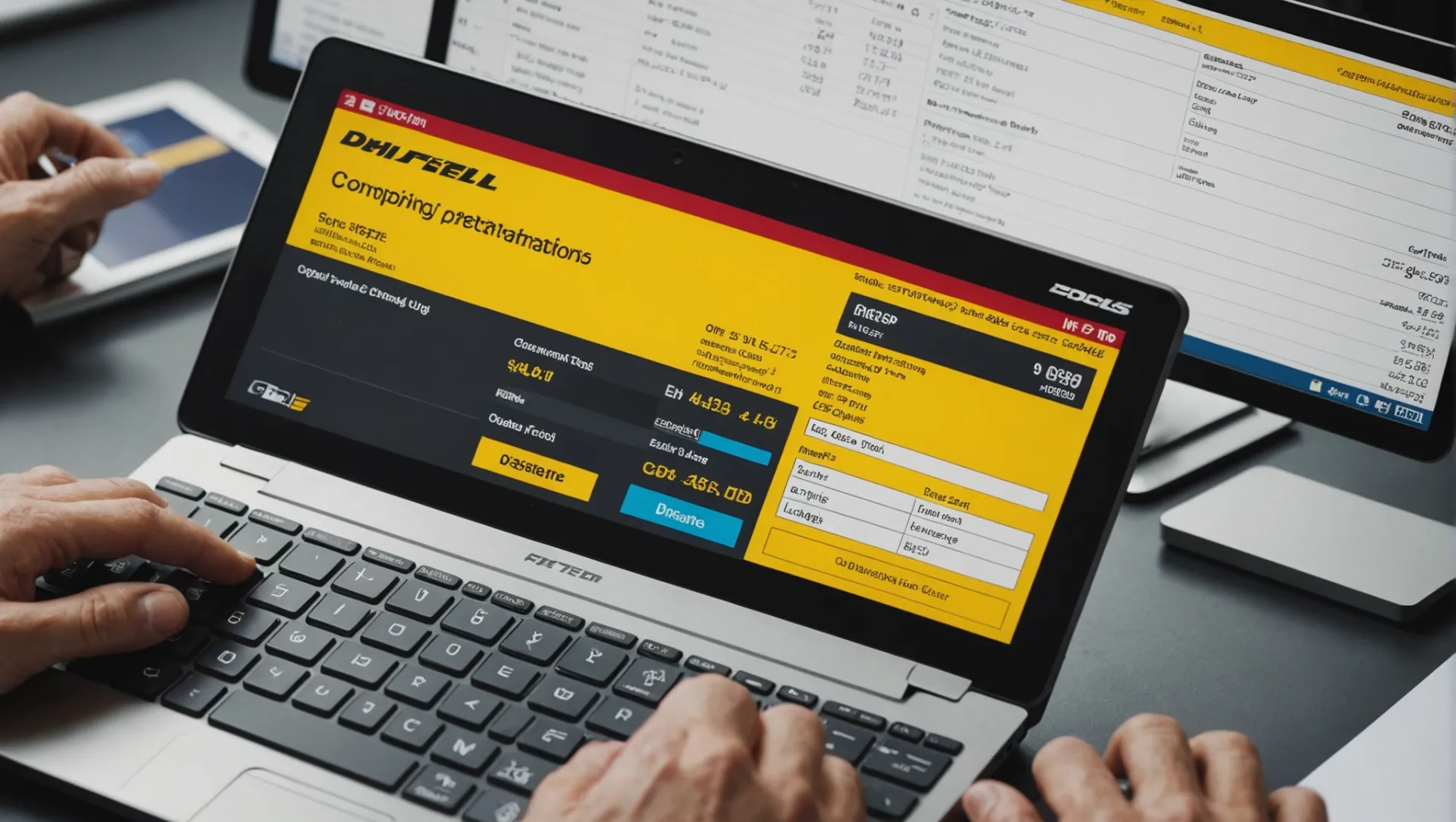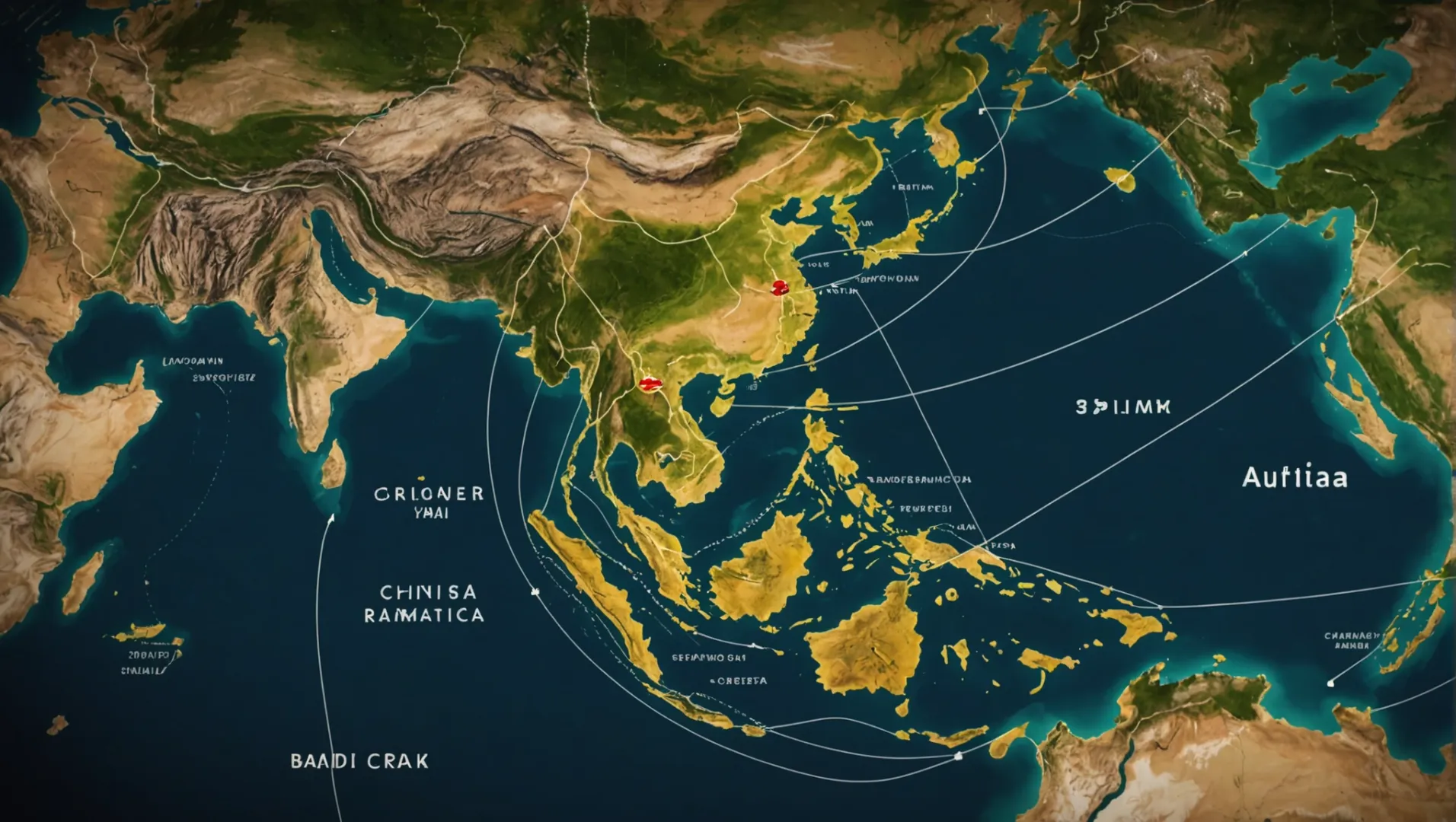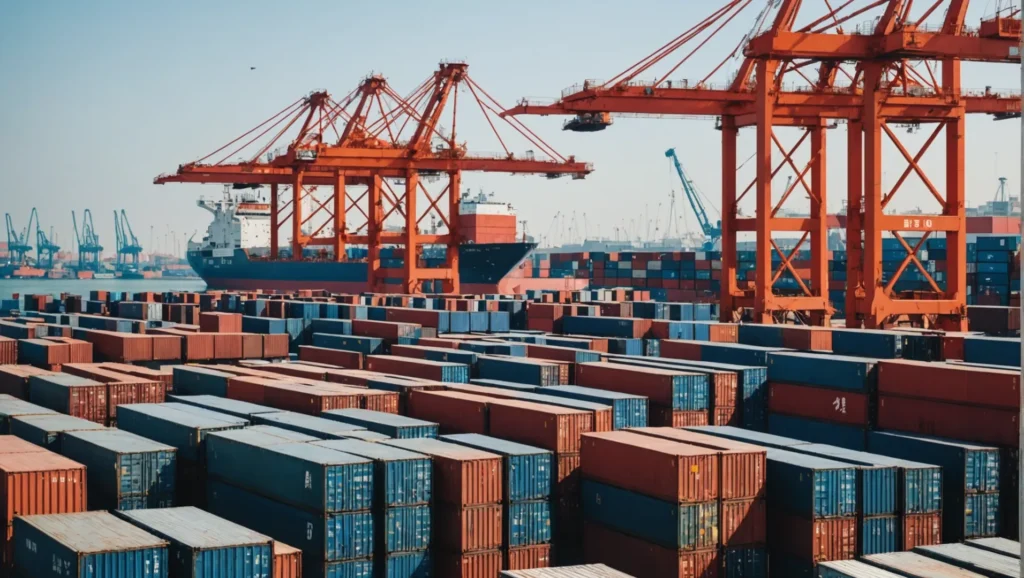Shipping from China might feel overwhelming at first, but trust me, it doesn’t have to be.
To calculate shipping costs from China, consider factors like package weight, dimensions, shipping distance, and selected shipping method. Use online calculators provided by logistics companies to get precise estimates based on these variables.
While this gives you a basic understanding of cost calculation, diving deeper into the specifics of shipping logistics can offer more clarity. Our comprehensive guide will help you explore all the aspects necessary to make informed decisions about your shipping needs.
Air freight is cheaper than sea freight.False
Sea freight is generally cheaper than air freight due to larger volumes.
What Are the Key Factors Affecting Shipping Costs?
Shipping costs can vary widely, and understanding the factors affecting them is crucial for budgeting and planning.
Shipping costs are influenced by package weight, dimensions, distance, and the shipping method. Fuel prices, customs duties, and peak seasons also play significant roles in determining the final cost.

Package Weight and Dimensions
The most obvious factors influencing shipping costs are the weight and dimensions of your package. Heavier and larger packages require more resources to transport, resulting in higher fees. Shipping companies often use volumetric weight calculations to determine costs, combining the package's actual weight with its size to provide a fair pricing model.
Shipping Distance
Distance is another key player in determining shipping costs. Shipping from China to Europe will have a different cost structure compared to shipping within Asia due to variations in logistics requirements, fuel usage, and labor costs. Generally, longer distances increase the cost due to higher resource consumption.
Selected Shipping Method
The mode of transportation greatly affects shipping costs. Air freight is faster but more expensive than sea freight. When choosing between these methods, consider your budget1 and time constraints. Additionally, express services tend to incur higher charges than standard ones.
Fuel Prices
Fluctuations in global fuel prices can cause shipping rates to rise or fall. Companies often adjust their fees based on current fuel prices, implementing surcharges during periods of high oil prices. This means that staying updated on fuel trends can help predict changes in shipping costs.
Customs Duties and Taxes
When shipping internationally, consider customs duties and taxes imposed by destination countries. These fees vary depending on the product type and value, often adding substantial amounts to overall shipping costs. Familiarizing yourself with customs regulations2 can help avoid unexpected charges.
Peak Seasons
Shipping during peak seasons like holidays or major shopping events can increase costs due to heightened demand. To mitigate this, consider planning shipments during off-peak times or negotiating rates with carriers in advance. Recognizing seasonal trends3 in shipping can lead to strategic cost savings.
Package weight directly affects shipping costs.True
Heavier packages use more resources, increasing transportation fees.
Peak seasons reduce shipping costs due to higher demand.False
Higher demand during peak seasons typically increases shipping rates.
How Do Different Shipping Methods Influence Costs?
Choosing the right shipping method can significantly impact your overall shipping costs. Understanding how each option works is crucial.
Different shipping methods influence costs by varying in speed, reliability, and handling fees. Air freight is faster but more expensive, while sea freight is cheaper yet slower. Courier services offer door-to-door convenience at a premium price.

Air Freight vs. Sea Freight
When considering air freight4 versus sea freight, cost differences are primarily influenced by speed and cargo nature. Air freight is typically more expensive due to its rapid delivery times, making it ideal for high-value or urgent shipments. Conversely, sea freight is economical for bulk shipments where time isn't a critical factor.
| Factor | Air Freight | Sea Freight |
|---|---|---|
| Speed | 1-3 days | 2-4 weeks |
| Cost | High due to fuel and speed | Low, best for large quantities |
| Ideal Cargo | Perishable, high-value goods | Non-perishable, bulk shipments |
Courier Services: Convenience at a Cost
Courier services like DHL, FedEx, and UPS offer door-to-door delivery, which adds a level of convenience but also increases costs. These services are ideal for smaller parcels where the shipper values tracking and reliability over cost savings.
- Advantages: Fast delivery times, comprehensive tracking, and reliable customer service.
- Disadvantages: Higher costs compared to other methods, limited to smaller package sizes.
The Role of Incoterms in Shipping Costs
Incoterms (International Commercial Terms) define the responsibilities of sellers and buyers in the shipping process. They can significantly influence shipping costs by determining who pays for what part of the journey. For instance, choosing an Incoterm where the seller handles transportation can simplify logistics but may increase overall product cost.
Understanding how these terms affect costs can help you choose the most suitable shipping method for your needs. Learn more about specific Incoterms here5.
Air freight is cheaper than sea freight.False
Air freight is more expensive due to speed and fuel costs.
Courier services offer door-to-door delivery.True
Courier services provide convenience with door-to-door delivery options.
Are There Tools to Accurately Estimate Shipping Charges?
Navigating the maze of shipping charges can be simplified using the right tools. Discover the most accurate ones here.
Yes, several online tools can accurately estimate shipping charges. These tools require input of details like package weight, dimensions, destination, and preferred shipping method to provide precise cost estimates. Popular options include DHL, UPS, and FedEx calculators, as well as platforms like Easyship and ShipStation.

Understanding the Basics of Shipping Cost Estimation Tools
Shipping cost estimation tools are designed to simplify the process of calculating how much you will need to pay to ship goods from one location to another. These tools take into account various factors such as package weight, dimensions, origin and destination addresses, and the selected shipping method.
The primary advantage of using these tools is their ability to provide near-instantaneous estimates that help in budgeting and planning. Many logistics companies offer their own proprietary calculators, which are tailored to their specific pricing structures.
Popular Tools and Platforms
1. DHL's Shipping Calculator
DHL offers a comprehensive shipping calculator6 that allows users to input necessary data and get an immediate estimate of costs. It factors in international shipping rates, duties, and taxes.
2. FedEx Rate Finder
FedEx provides a Rate Finder7 tool where users can calculate domestic and international shipping charges by entering package details and destinations.
3. UPS Shipping Cost Estimator
UPS features a shipping cost estimator8 that helps customers understand their shipping expenses in detail by considering service levels and additional options.
4. Easyship
Easyship is a platform that aggregates shipping rates from multiple carriers, providing comparative estimates9 so you can choose the most cost-effective option.
How These Tools Benefit Businesses
- Efficiency: By saving time on manual calculations and eliminating guesswork.
- Cost-Effectiveness: Helps businesses choose the best shipping method that fits their budget.
- Accuracy: Provides reliable estimates by considering all pertinent factors, reducing the risk of unexpected costs.
Factors Influencing Accuracy
When using these tools, remember that accuracy can be influenced by changes in fuel prices, currency fluctuations, and seasonal surcharges. Hence, it’s advisable to check for updates on these elements before relying solely on the provided estimates.
Utilizing these tools effectively can streamline your shipping process10, making international trade more manageable and predictable.
FedEx offers a tool for estimating shipping costs.True
FedEx provides a Rate Finder tool for calculating shipping charges.
Shipping cost tools ignore package dimensions.False
Tools require dimensions to estimate accurate shipping costs.
What Are the Most Cost-Effective Shipping Routes?
Discovering cost-effective shipping routes is crucial for optimizing logistics and reducing expenses in global trade.
The most cost-effective shipping routes from China involve balancing time, distance, and mode of transport. Major routes include sea freight via the Suez Canal to Europe or across the Pacific to North America, often preferred due to their balance of cost and efficiency.

Understanding Shipping Routes
Shipping routes are like highways on the ocean and air, connecting major ports worldwide. These routes influence shipping costs significantly. Choosing the right route can lead to substantial savings, especially when importing goods from China.
Key Factors in Choosing Routes
-
Distance and Duration: Shorter distances typically mean lower costs, but don't forget to factor in time. For instance, while the Trans-Pacific route to the US is longer than the Trans-Siberian railway, it may be more cost-effective due to larger shipping volumes.
-
Volume and Frequency: Higher volume routes often have more competitive pricing due to economies of scale. The South China Sea route is a prime example, as it handles a significant portion of global maritime trade.
-
Seasonal Variations: Shipping rates fluctuate with demand changes, often dictated by seasons or global events. During Chinese New Year, for instance, rates may spike due to increased demand.
-
Transport Mode: Comparing sea and air freight11 is crucial. While sea freight is usually cheaper, air freight can save time and money when shipping high-value goods.
Popular Cost-Effective Routes
| Route | Main Ports | Cost Efficiency |
|---|---|---|
| Trans-Pacific | Shanghai to LA | High for large shipments |
| Suez Canal | Shenzhen to Rotterdam | Balanced |
| China-Europe Railway | Yiwu to Duisburg | Moderate for speed |
These routes are favored due to their balance between speed and cost, enabling businesses to maximize profitability while ensuring timely delivery.
Leveraging Technology
Utilizing technology can further optimize shipping routes. Platforms providing real-time analytics on route efficiency, traffic conditions, and weather patterns can enhance decision-making.
Final Thoughts on Route Selection
Ultimately, the most cost-effective shipping route from China depends on specific business needs, including budget constraints, urgency, and shipment volume. Regularly assessing these factors in relation to current market trends will ensure that your logistics remain both efficient and economical.
Sea freight is always cheaper than air freight.False
While generally cheaper, air freight can be cost-effective for urgent, high-value goods.
The Suez Canal route balances cost and efficiency.True
The Suez Canal offers a balance of shorter distance and large volume handling, optimizing costs.
Conclusion
Understanding shipping costs from China empowers better budgeting and logistics planning. Use this knowledge to optimize your supply chain for efficiency and cost-effectiveness.
-
Explore differences between air and sea freight for budget-friendly decisions.: Air freight is faster, safer and more reliable than ocean freight, but it's also more expensive – a $195 ocean shipment can cost $1,000 by air. Learn more about ... ↩
-
Learn about customs duties to avoid unforeseen shipping expenses.: The standard VAT rate in China is 13%, and it applies to all taxable goods except agricultural and utility items. For these a 9% VAT rate is applicable instead. ↩
-
Discover how seasonal trends affect shipping costs and plan strategically.: Review your shipping data from previous peak seasons to better understand trends and roadblocks. This will help you manage risk and identify ... ↩
-
Discover detailed comparisons on air and sea freight costs.: Air freight is faster, safer and more reliable than ocean freight, but it's also more expensive – a $195 ocean shipment can cost $1,000 by air. Learn more about ... ↩
-
Learn how Incoterms affect your shipping expenses.: Incoterms are standardised shipping protocols initially constructed to define who is responsible for what during international transactions. ↩
-
Discover how DHL calculates international shipping costs efficiently.: We can offer you an instant quote for your shipping needs both domestically and internationally. Fill out your shipment details below to discover your quotes. ↩
-
Learn how to use FedEx for quick shipping cost estimates.: Use the FedEx Shipping Calculator for estimated shipping costs based on details, such as shipment origin, destination, date, packaging, and weight. ↩
-
Explore UPS's detailed cost estimation process for shipments.: Our cost calculator makes it easy to estimate your shipment costs. Simply enter your origin, destination, and package weight for a quick shipping quote. ↩
-
Compare rates across carriers with Easyship's comprehensive tool.: Compare shipping rates & Couriers, print shipping labels, generate international documents and more with our simple shipping solution. ↩
-
Optimize your shipping operations with effective tool usage insights.: Provide your workers with achievable goals; Consider your supply chain visibility; Implement a smart warehouse system. Here's how you can ... ↩
-
Learn how sea and air freight differ in cost and time efficiency.: Air freight is faster, safer and more reliable than ocean freight, but it's also more expensive – a $195 ocean shipment can cost $1,000 by air. Learn more about ... ↩




